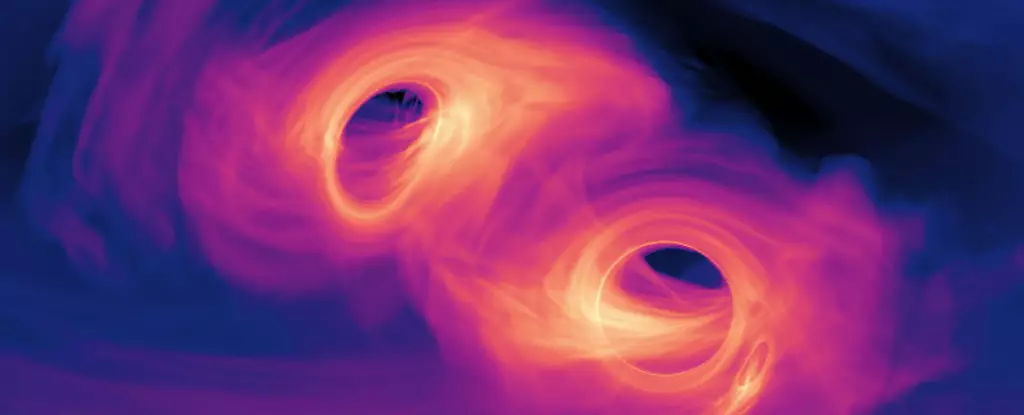The concept of black holes evaporation due to Hawking Radiation has been a topic of interest for decades. Stephen Hawking’s groundbreaking idea in the 1970s sparked curiosity among researchers. However, despite this theory, the observation of Hawking Radiation has remained elusive. Recently, a group of European scientists proposed a new approach to detect this phenomenon by studying black hole mergers.
Black hole mergers, a phenomenon predicted by theoretical physics, were only first observed by the LIGO observatory in 2015. These mergers release powerful gravitational waves, providing a unique opportunity to study the remnants of the process. According to the researchers, black hole mergers may give rise to small black holes known as “morsels.” These morsels, resembling asteroids in size, are ejected into space during the merger event, making them potentially detectable due to their small size.
The researchers suggest that the Hawking Radiation emitted by these morsel black holes produces gamma-ray bursts with a distinct energy signature. These bursts, characterized by high-energy photons, offer a unique insight into the evaporation process of black holes. By studying the gamma-ray bursts from these morsel black holes, researchers hope to uncover valuable information about the mechanism behind Hawking Radiation.
Despite the exciting possibilities, there are several challenges associated with detecting Hawking Radiation from black hole morsels. The emission of particles in a spherically symmetrical pattern complicates the observational process, especially if the larger black hole obstructs the view of the emitted radiation. Additionally, factors such as the intense gravitational environment during a black hole merger and relativistic velocities of morsel black holes could influence the spectra of the emitted radiation.
The authors of the research paper also allude to the idea that detecting Hawking Radiation from morsel black holes could shed light on new physics beyond the Standard Model of Particle Physics. They propose that the observation of these black holes could provide insights into particle physics at energies that are currently inaccessible through traditional collider experiments. This could potentially reveal new physics theories based on supersymmetry, composite dynamics, or extra dimensions.
One intriguing aspect highlighted by the researchers is the possible link between asteroid-size morsel black holes and dark matter. Given that these morsels might have originated in the early Universe, their existence and non-evaporation could contribute to the elusive dark matter puzzle. By studying Hawking Radiation from these morsel black holes, researchers aim to uncover the origins of dark matter and its implications for our understanding of the Universe.
The search for Hawking Radiation in black hole morsels represents a novel approach to studying the evaporation of black holes and exploring new frontiers in physics. While challenges and uncertainties remain, the potential insights gained from detecting this phenomenon could revolutionize our understanding of the Universe and the fundamental laws governing it.


Leave a Reply